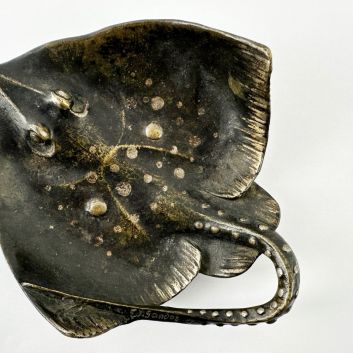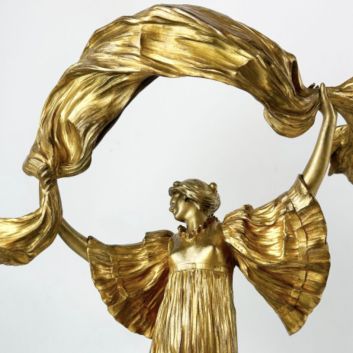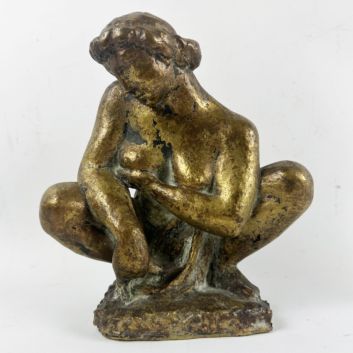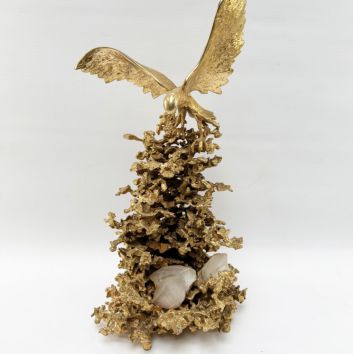Cote et valeur des oeuvres, sculptures, bronzes de Camille Alaphilippe
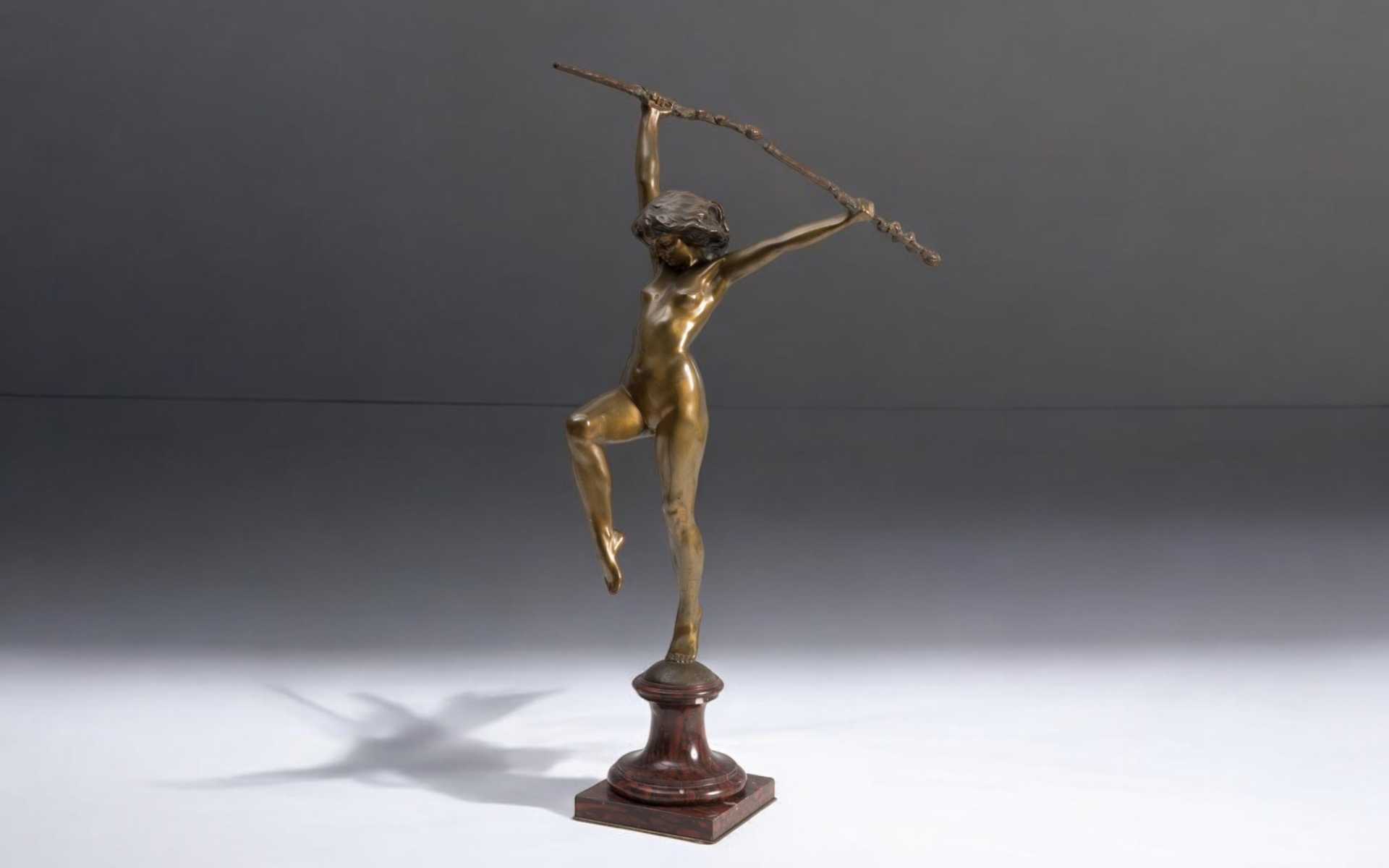
Si vous détenez une œuvre réalisée par l’artiste Camille Alaphilippe ou d’après, et que vous souhaitez connaître sa valeur, nos experts et commissaires-priseurs agréés par l’État vous offriront leurs services d'expertise.
Nos spécialistes s’emploieront à réaliser une expertise gratuite de votre œuvre, et vous transmettront une estimation précise de sa valeur sur le marché actuel.
Par la suite, si vous désirez vendre votre œuvre, nous vous orienterons vers le meilleur dispositif possible pour en obtenir un prix optimal.
Cote et valeur des œuvres de Camille Alaphilippe
Sculpteur français de l’Art Nouveau, Camille Alaphilippe travaille surtout le bronze. Dernièrement, sa cote est en hausse sur le marché de l’art.
Ses œuvres sont adjugées entre 100 et 3 500€ sur le marché des enchères, un delta conséquent mais qui en dit long sur la valeur qui peut être attribuée aux œuvres de l’artiste.
Une sculpture en bronze, Bacchante, a été vendue à hauteur de 3 500€ tandis qu’elle était estimée entre 3 500 et 4 000€.
Ordre de valeur allant d’une œuvre simple à la plus prestigieuse
Technique utilisée | Résultat |
|---|---|
Autres médium (grès, marbre...) | De 100 à 640€ |
Bronze | De 120 à 3 500€ |
Réponse en - de 24h
Style et technique de l’artiste Camille Alaphilippe
Camille Alaphilippe est un sculpteur français qui travaille majoritairement avec le bronze. Ses sculptures se caractérisent par des sujets animaliers, des danseuses ainsi que des sujets mythologiques.
Il s’inscrit dans le courant de l’Art Nouveau.
Il a produit quelques marbres et céramiques mais est surtout connu et recherché pour ses bronzes.
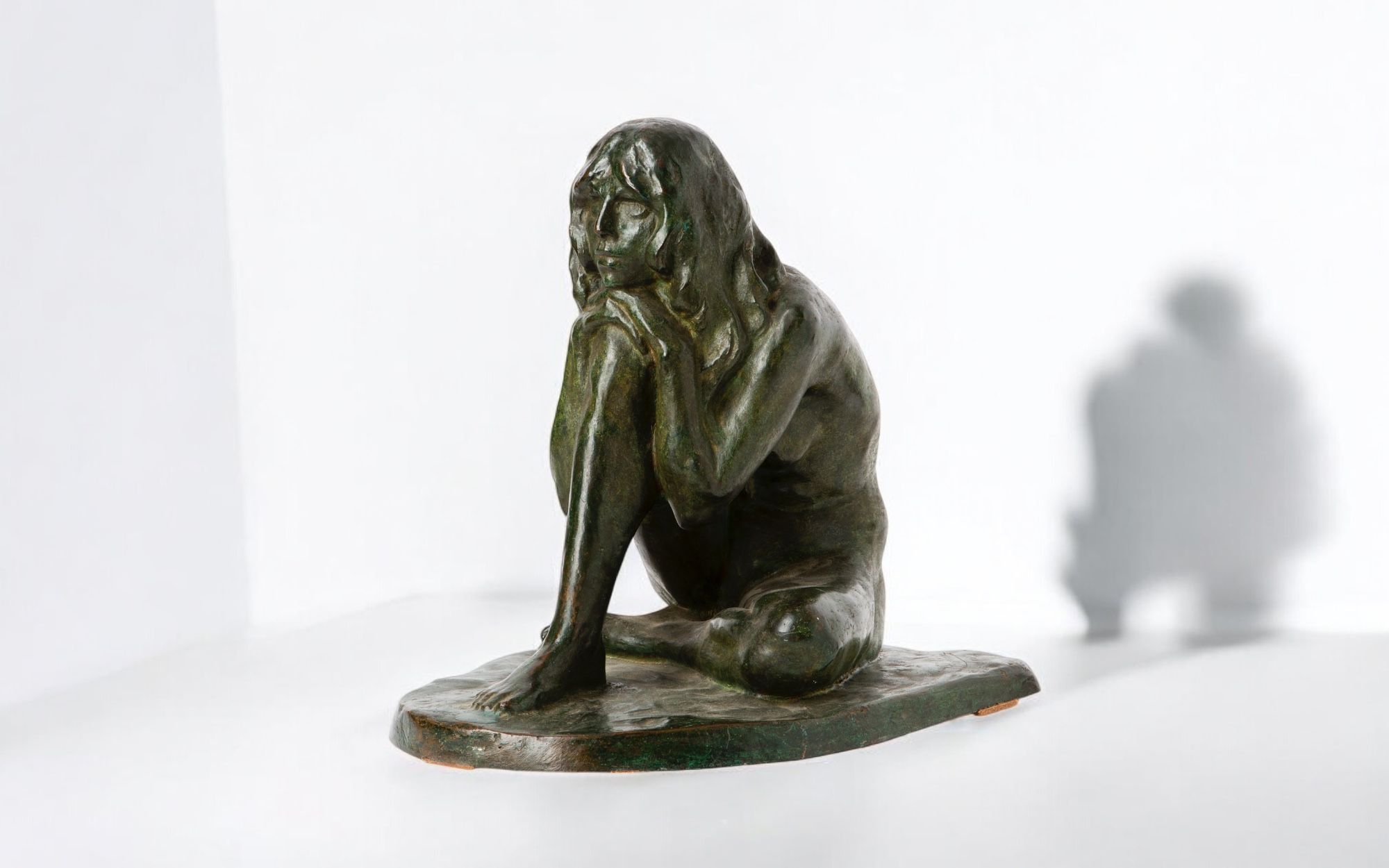
La carrière de Camille Alaphilippe
Camille Alaphilippe (1874 - 1934), est un sculpteur et céramiste français de l’Art Nouveau, né à Tours.
Il déménage assez rapidement à Paris puisqu’il étudie à l’Académie des Beaux-Arts de Paris dans les ateliers de Jean-Paul Laurens et Louis-Ernest Barrias.
En 1898, alors qu’il est âgé de seulement 24 ans, il obtient le Prix de Rome en sculpture. Le thème qu’il avait choisi était classique, mais difficile puisque très courant au cours de l’histoire de l’art, puisqu’il s’agissait de Caïn tuant Abel.
À partir de 1901, sa carrière prend une autre direction puisqu’il s’intéresse de près à la céramique. C’est à partir de cette période qu’il trouve sa véritable identité artistique, à savoir la mouvance de l’Art Nouveau, tout juste en train d’apparaître.
Il s’essaye aussi à la décoration, marié à une artiste qui pratique aussi la sculpture, réalisant notamment les décors des magasins de Félix Potin et de François Carnot.
Peu de temps après, en 1914, il est nommé directeur de la manufacture de grès flammés d’Alexandre Bigot, située dans le Loir-et-Cher.
La première guerre mondiale va cependant freiner considérablement sa carrière. Il est démobilisé, n’a que peu d’argent en plus d’être tombé malade. Ayant besoin de nouveaux horizons, il décide donc de s’installer en Algérie.
Il y dirige la section de l’école des Beaux-Arts d’Alger, où il forme notamment le sculpteur français André Greck. Il est notamment célèbre pour avoir réalisé en Algérie de nombreux monuments en mémoire des différents conflits qui y ont eu lieu au début du XXème siècle.
Il meurt à Alger en 1934, âgé de 60 ans.
Le plâtre de son prix de Rome aux Beaux-Arts de Tours
Focus sur La Femme au Singe, grès et bronze, Camille Alaphilippe
La Femme au Singe de Camille Alaphilippe, exposée au Petit Palais, est une sculpture qui incarne toute la délicatesse et la poésie caractéristique du début du XXe siècle et du courant de l’artiste.
Alaphilippe, artiste influencé par l’Art Nouveau, nous offre ici une œuvre où l’élégance des formes se marie parfaitement avec une symbolique subtile, les courbes sont légères et le sujet léger, permettant ainsi à la sculpture de s’inscrire parfaitement dans son courant.
La figure féminine, légèrement inclinée, semble perdue dans ses pensées, tandis que le singe à ses pieds apporte une touche inattendue, presque espiègle. Ce duo improbable évoque une complicité silencieuse qui pique la curiosité du spectateur.
Alaphilippe privilégie des formes épurées et des lignes douces, caractéristiques de son style. La femme, enveloppée dans un drapé fluide, paraît presque flotter dans l’espace.
Ce choix artistique permet de focaliser l’attention sur la posture et l’expression de la figure, tout en évoquant une légèreté apaisante.
Le singe, en revanche, est plus vif dans son mouvement, ce qui crée un contraste intéressant avec l’attitude plus posée de la femme. Ce contraste rend la scène à la fois paisible et dynamique.
L’influence de l’Art Nouveau se perçoit également dans l’attention portée aux détails décoratifs, sans pour autant surcharger l’ensemble. La simplicité de la scène laisse place à l’imagination : que symbolise ce singe ?
Est-il un reflet de l’esprit libre de la femme ou simplement un compagnon fidèle ? Cette ambiguïté fait partie du charme de l’œuvre, qui invite à différentes interprétations sans jamais imposer une seule lecture.
Le matériau, certainement du bronze, confère à la sculpture une qualité intemporelle. La patine douce et la finesse des traits renforcent l’impression de sérénité qui se dégage de la figure féminine.
Le bronze, souvent associé à des représentations héroïques ou monumentales, est ici utilisé pour capturer un moment plus intime, presque introspectif.
Cette utilisation subtile du matériau témoigne du savoir-faire d’Alaphilippe, qui réussit à insuffler une dimension émotionnelle à une matière pourtant froide et rigide.
Un autre aspect fascinant de cette œuvre est la façon dont Alaphilippe joue avec la posture du corps. La femme est légèrement penchée, comme si elle se laissait aller à une rêverie profonde, tandis que le singe, à ses pieds, semble curieux et attentif.
Cette interaction entre les deux protagonistes suggère un lien fort, peut-être symbolique, entre la figure humaine et l’animal. Cela rappelle les préoccupations de l’époque, où l’art cherchait souvent à explorer les rapports entre nature et culture, humain et animal.
Le regard de la femme, serein et détaché, contraste avec l’énergie contenue du singe, créant ainsi une sorte de dialogue silencieux entre les deux.
Alaphilippe parvient à capturer cette dualité avec une grande finesse, sans tomber dans l’excès ou la surcharge de détails. Cette simplicité rend la sculpture d’autant plus puissante, car elle laisse à chacun la liberté d’interpréter cette scène à sa manière.
Enfin, La Femme au Singe est une œuvre qui témoigne du talent d’Alaphilippe à allier symbolisme et esthétisme. Elle incarne une époque où l’art cherchait à représenter la beauté sous des formes nouvelles, en privilégiant des lignes fluides et des sujets plus intimes.
Edgar Degas avait déjà commencé, en tant qu'impressionniste, à prendre cette direction.
L’œuvre, avec sa composition harmonieuse et son thème poétique, s'inscrit pleinement dans ce courant, tout en affirmant la personnalité artistique singulière de son créateur.
La sculpture Art Nouveau du XXème
La sculpture dans l’Art Nouveau, apparue à la fin du XIXe siècle, se distingue par une rupture nette avec les conventions classiques.
Ce mouvement artistique, dont les principaux représentants incluent des sculpteurs tels qu’Agathon Léonard et Alexandre Charpentier, fait la part belle aux formes organiques et fluides, directement inspirées par la nature.
Les thèmes choisis sont souvent végétaux ou animaliers, et les lignes sinueuses qui caractérisent ces œuvres évoquent des courbes naturelles, rappelant les tiges et les feuilles qui semblent s’épanouir avec légèreté.
Dès les premières années du XXe siècle, la sculpture Art Nouveau s’inscrit aussi dans une approche décorative, où le rôle de l’objet sculpté dépasse la simple représentation.
Ainsi, de nombreux artistes s’associent aux architectes pour orner les façades des immeubles, comme celles de Hector Guimard, ou encore pour réaliser des éléments de mobilier ou des objets d’art destinés à l’intérieur bourgeois.
Les matériaux, eux aussi, varient : on retrouve le bronze, le marbre, mais également des matériaux plus novateurs, comme la céramique, qui permet des jeux de couleurs et de textures.
Cependant, malgré l’enthousiasme pour ce style audacieux, l’Art Nouveau en sculpture reste une forme d’art éphémère. Le mouvement s’essouffle rapidement avec l’émergence de l’Art Déco, mais il laisse derrière lui des œuvres qui continuent d’impressionner par leur raffinement et leur recherche d’un équilibre parfait entre l’art et la nature.
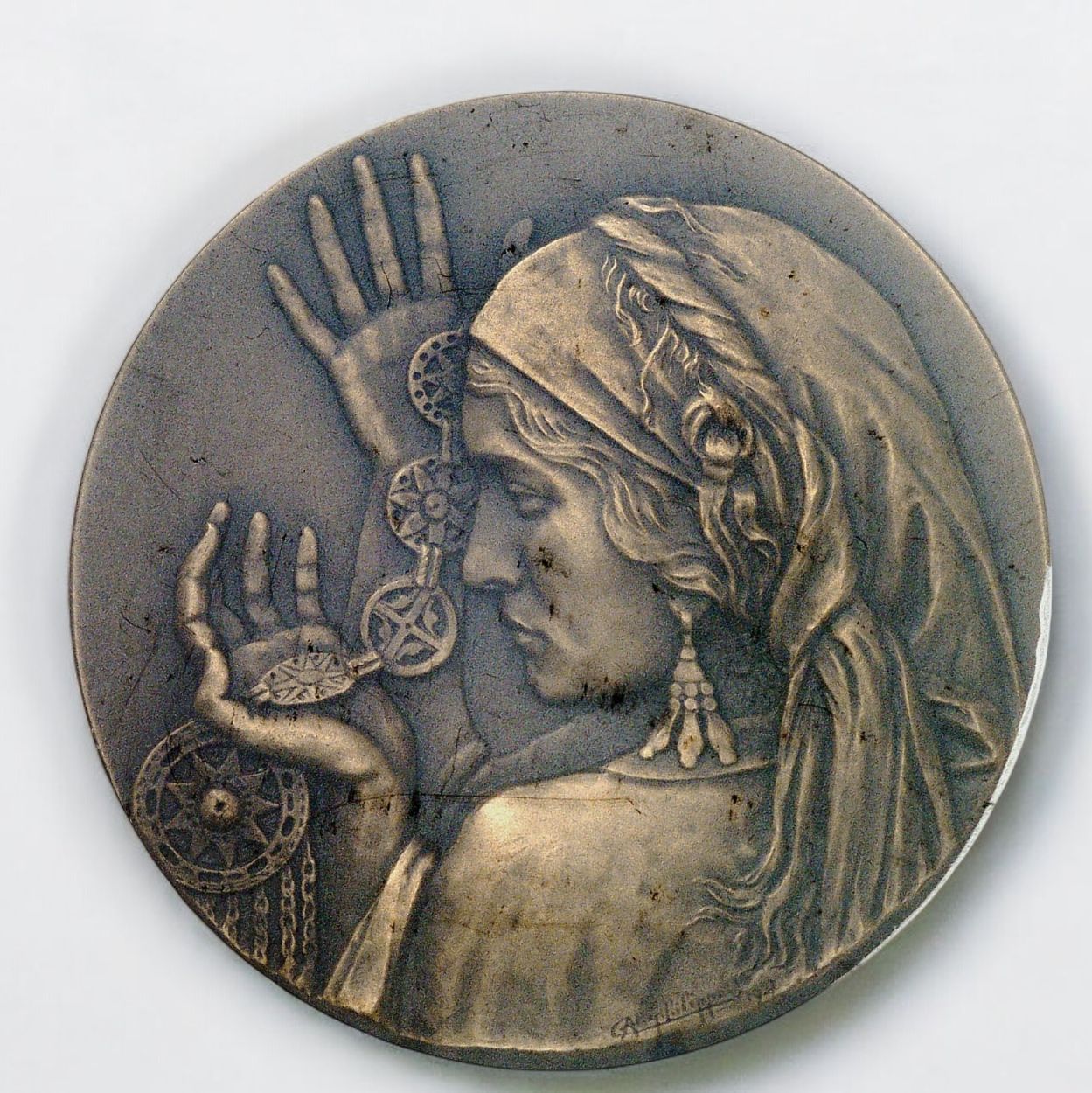
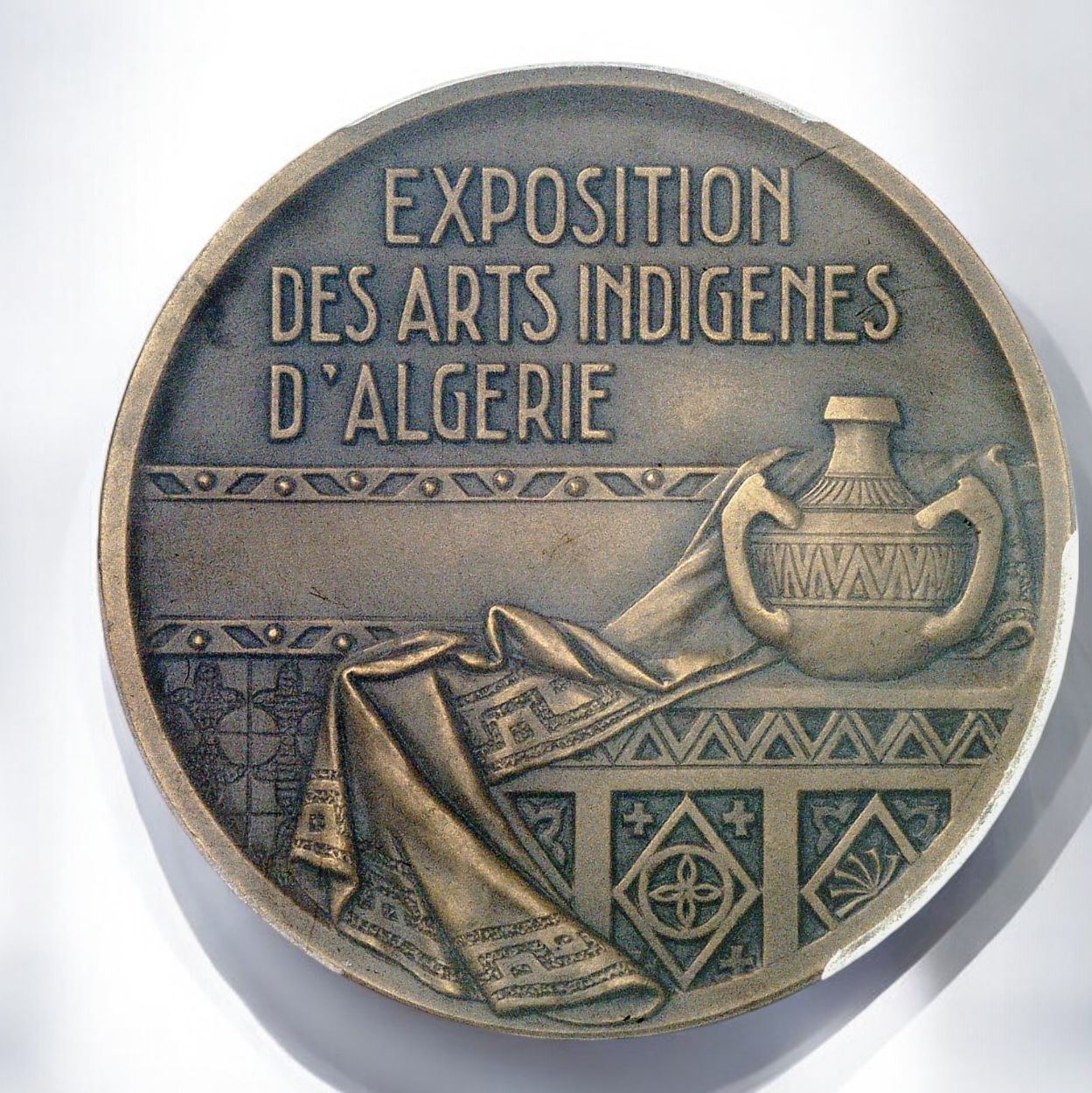
L’empreinte de Camille Alaphilippe sur sa période
Camille Alaphilippe est un artiste connu et demandé de son vivant et vend des œuvres à des prix assez élevés pour en vivre grâce aux différentes commandes qu’il reçoit. Aujourd’hui, sa cote est stable sur le marché des enchères.
Bien que peu connu aujourd’hui par le grand public, ses œuvres ont beaucoup de succès sur le marché de l’art, ses statues étant prisées par de nombreux collectionneurs.
Reconnaître la signature de l’artiste
Camille Alaphilippe signe en écriture cursive ses œuvres souvent de son nom de famille. L’expertise reste primordiale afin d’authentifier votre bien.
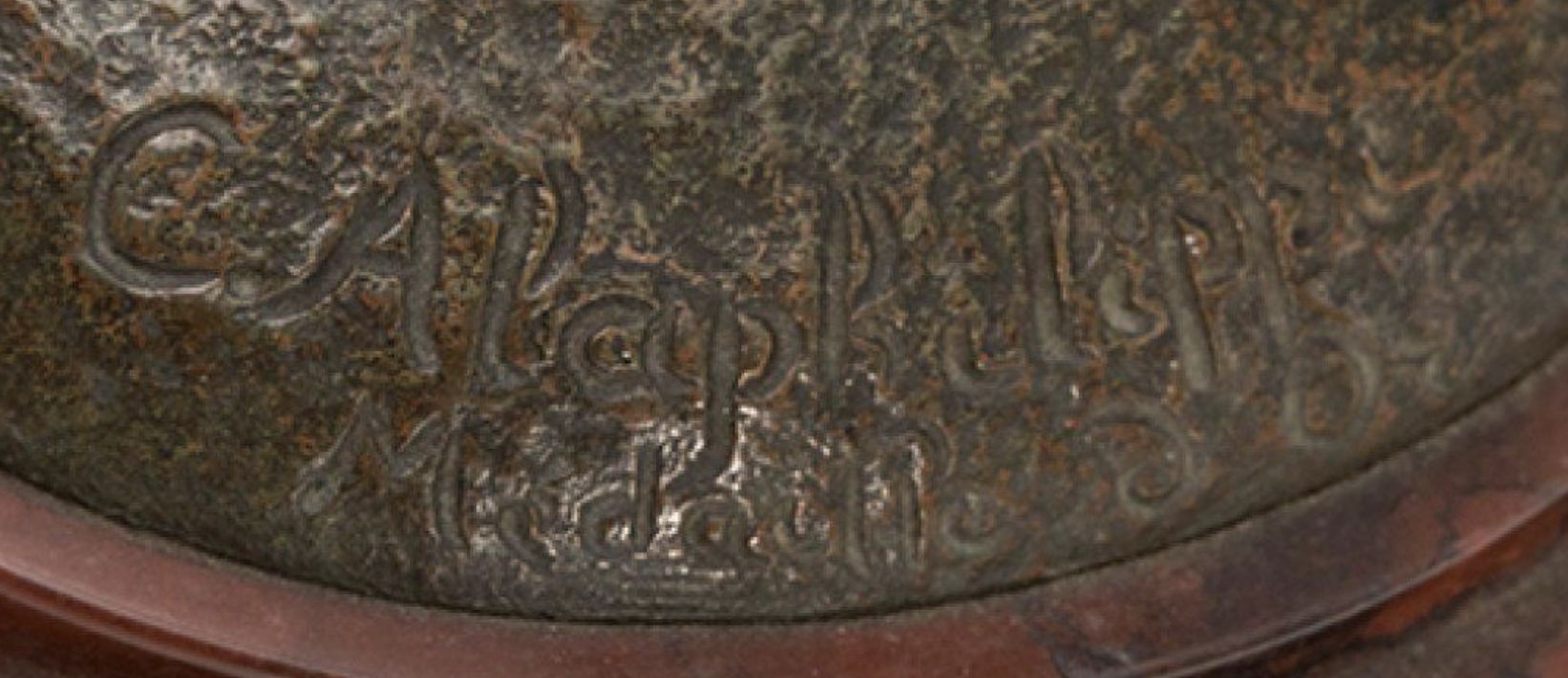
Connaître la valeur d’une œuvre
S’il s’avère que vous possédez une œuvre de Camille Alaphilippe, demandez sans hésitation une évaluation gratuite par le biais de notre formulaire sur notre site internet.
Un membre de notre équipe, composée d’experts et de commissaires-priseurs agréés, vous contactera promptement afin de vous communiquer l’estimation de la valeur de votre œuvre, sans oublier de vous transmettre les informations ad hoc sur celle-ci.
Si vous considérez vendre votre œuvre, vous serez également accompagnés par nos spécialistes afin de bénéficier d’alternatives pour la céder au meilleur prix possible.
Réponse en - de 24h
A découvrir dans la même thématique
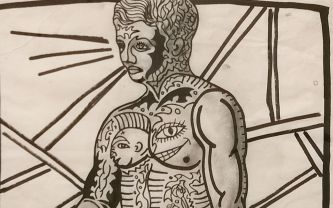
Valeur et cote des oeuvres, peintures, dessins de Robert Com...
Robert Combas, artiste de la Figuration libre, a produit un nombre d'oeuvres conséquent appréciées aux enchères. Leur cote et leur valeur sont hautes.
En savoir plus >
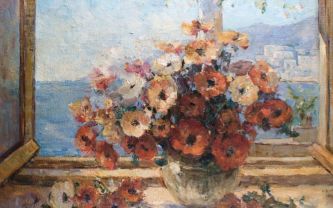
Cote et valeur des tableaux, dessins, peintures de Georges L...
Georges Lapchine est un peintre russe du XXème siècle qui a produit des toiles impressionnistes russes ayant beaucoup de succès aux enchères.
En savoir plus >
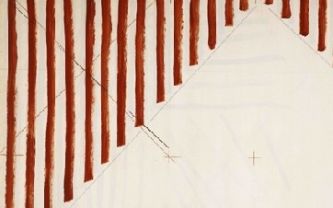
Cote et valeur 2024 des tableaux, dessins, peintures de Mart...
Martin Barré est un peintre abstrait du XXème siècle qui a produit des oeuvres dont la cote et la valeur sont élevées sur le marché des enchères.
En savoir plus >
Site sécurisé, anonymat conservé
Commissaire-priseur et expert agréé par l'État
Estimations gratuites et certifiées
